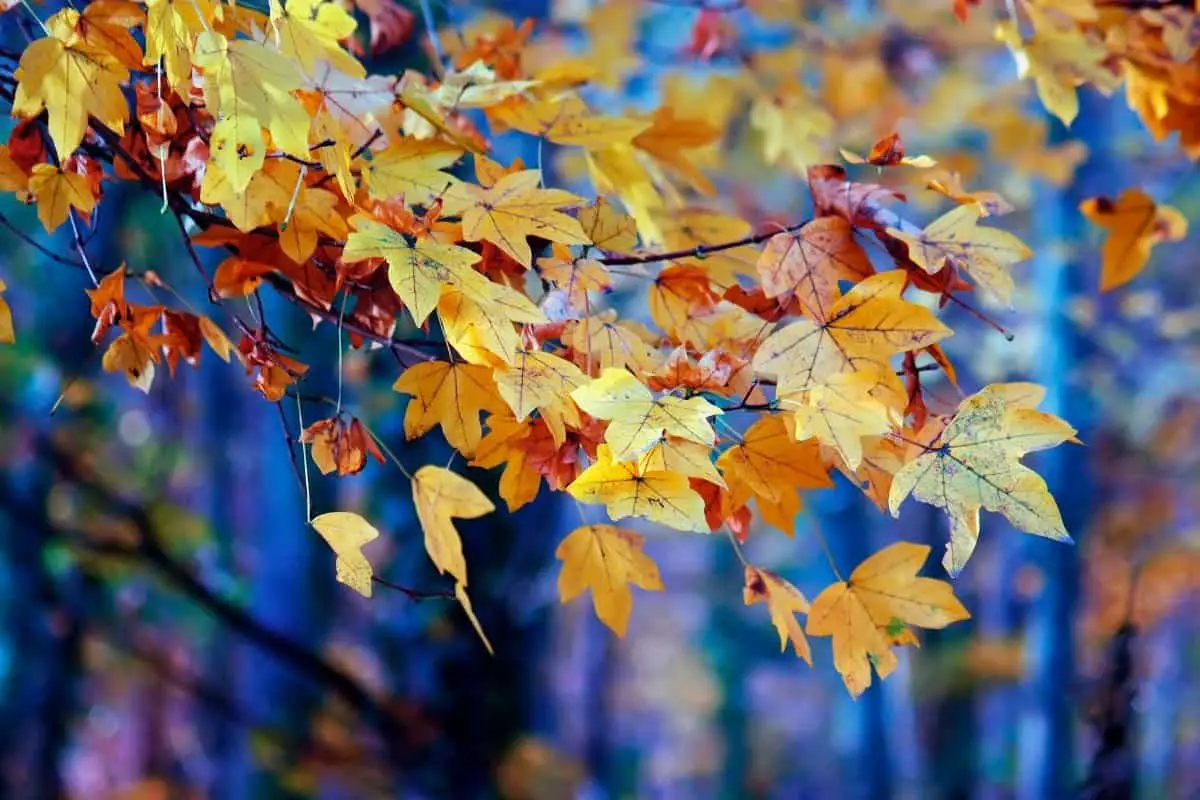Last Updated on January 21, 2022 by
Before you plant any of them it’s important to know where do sycamore trees grow so you can plant them according to the USDA zones.
The sycamore trees (Platanus Occidentalis) are beautiful trees for large landscapes. The most striking feature of this tree is the bark that has a camouflage pattern comprising of gray-brown outer bark that peels in patches to reveal light gray or white wood under.
The older sycamore trees have solid, light gray trunks that do not peel at all. These grand majestic trees have a lot going for them. Besides the bark peeling, they have 1 inch balls hanging from this tree all through winter falling to the ground in spring. Each ball hangs on its own stringy twig of about 3 to 6 inches long
Where Do Sycamore Trees Grow?
Sycamore trees are native to different parts of the globe. In the U.S, these trees grow in hardiness zones 4 through 10 and thrive in full sun or light as well as well-drained soils.
- The American Sycamore (Platanus occidentalis) also known as buttonwood is native to the Southeastern United States thriving in lowland streams and rivers. The tree dies well in USDA zones 4 to 9.
- The California Western Sycamore (Platanus racemosa) is native to California and grows in USDA hardiness zones 7 to 10.
- Oriental Plane Tree (Platanus orientalis) is native from Southeastern Europe all the way to Asia and does well in USDA zones 7 through 9.
- The Hybrid London Plane Tree (Platanus acerifolia) thrives in USDA zones 4 to 8. It is planted majorly in cities throughout the world for its smog appearance.
Growth Sycamore Tree Facts
- It is the largest deciduous tree in the Eastern United States
- But how tall do sycamore trees grow? Sycamore trees can grow between 75 to 100 feet tall or even taller under the right conditions with a similar spread in width
- The trunk can expand to about 10 feet in diameter
- This tree grows at a moderate to rapid rate and has a moderate to long life span
- Sycamores have strong wood with several uses
- Sycamores are valued for their shade and beauty. Their cream to olive exfoliating bark is beautiful in all seasons.
- The leaf size varies and they have a 1-inch fruit hanging from the tree on long stalks throughout winter.
- As it grows old, it is attacked by a fungus that consumes the heartwood. The fungus doesn’t kill the tree but it weakens them leaving them hollow
- Wildlife benefits from hollow sycamore trees using them as storage for food, nesting sites, and shelter.
- This tree is a great shade tree in parks, along the banks of a stream, and in other open areas.
- They were once planted as street trees but a lot of little and invasive roots damages the sidewalks but in old suburban areas you might still spot them.
- The tree prefers deep, moist, rich soils and full sun or light shade.
- Sycamores are the oldest species of trees on earth known for hardiness and longevity
- Some sycamores develop multiple trunks
- There are over 10 species of sycamore trees most sharing the same characteristics
- This tree has an aggressive root system as it works to establish a sturdy trunk
- This tree should not be planted near homes or buildings. They can cause damage in case their branches break.
BLACK+DECKER Electric Leaf Blower, 7-Amp (LB700)
Growing A Sycamore Tree
Sycamore trees are easy to grow. They prefer deep, rich moist soil but well-drained. Plant your sycamore tree in the spring or fall.
Sycamore tree care is easy. Fertilize it every other year if it’s not growing as fast as it should or if the leaves are pale.
Water the young trees deeply to keep the soil from drying out. After the tree has grown for a couple of years, allow the tree to withstand moderate drought.
Problems That Sycamore Tree Bring To People
A sycamore tree sheds a lot of leaves, twigs, seed balls, and strips of bark meaning it leaves a huge mess that needs someone to clean.
The tiny hairs on the seed ball irritate the skin causing respiratory distress if inhaled by sensitive people. Any time you are removing the seeds from a seed ball, wear a mask or respirator and gloves.

The leaves and leaf stems have a coating of hair when they are new. The shed hair in spring irritates eyes, skin, and respiratory tract.
The roots often infiltrate water and sewer lines damaging sidewalks and paved areas.
Sycamore Tree Information
Now that we have seen where sycamore tree grows and how to grow it, you may want to grow your own but be sure you plant it away from homes so that it doesn’t cost you any damage. Also, be careful how you handle it causes irritations to sensitive people.
FAQs
What zone do sycamore trees grow?
Sycamore trees are native to the eastern United States, from Virginia and Maryland to southern New Jersey. They're also found in the Midwest and as far west as the Mississippi River. Sycamores are deciduous trees with a broad, rounded crown, whereas elms have a narrower, conical shape.
The sycamore is the largest American maple. The leaves are alternate, three-lobed, and dark green in summer, turning yellow in autumn. The branches of a sycamore can grow to heights of 100 feet (30 m) or more.
Does sycamore grow in UK?
The only tree with the same form is the willow, which can be found in many parts of the UK.
What is special about a sycamore tree?
As an evergreen, the sycamore has two important features. It is evergreen and it sheds its leaves in the fall. As such, it is an excellent deciduous tree for temperate regions. This makes it a good choice in areas where there is little or no winter snow. It has been widely planted around the world.
They grow rapidly, producing abundant pollen which can be dispersed by wind.
In what states can sycamore trees grow?
According to the U.S. Department of Agriculture, sycamore trees can grow in the states of California, Colorado, Florida, Georgia, Hawaii, Idaho, Illinois, Indiana, Iowa, Kansas, Kentucky, Louisiana, Maine, Massachusetts, Michigan, Minnesota, Mississippi, Missouri, Montana, Nebraska, New Hampshire, New Jersey, New Mexico, North Dakota, Ohio, Oklahoma, Oregon, Pennsylvania,
Rhode Island, South Carolina, Tennessee, Texas, Utah, Vermont, Virginia, Washington, Wisconsin and Wyoming.
Are sycamore trees hard to grow?
Sycamore trees are easy to grow and they can be grown almost anywhere. They have a very wide range of habitats, including chalk downland and sandy soils. The most common use for sycamores is as street trees, but they are also used for ornamental planting in parks, schools and cemeteries.
Sycamore seeds are large, and the tree has a high rate of germination. The seeds will usually germinate within one year of being planted. Sycamores can grow quickly and are often used as a fast-growing street tree. However, they can suffer from poor air movement and dry conditions, which can lead to fungal diseases.
They also require more fertilizing than other trees. Sycamore seedlings usually flower in their second year. When planted in a nursery bed, it is best to plant them after all the roots have been removed from the tree, since this increases the likelihood that the roots will be able to take hold. Sycamore seedlings need a lot of care during their early stages.
How long does it take for a sycamore tree to grow?
I just had the same question. It depends on the type of tree and the climate in your area, but a typical rate is about 30 years. I can also tell you is that a typical tree will take approximately 100 years to reach full maturity. There are some trees which might be faster, but I don't know if that's the case for sycamores.
Caroline is a gardener who loves to get down to the nitty–gritty of gardening. She proudly proclaims herself as a ‘dirt worshipper‘ and can often be found deep in the garden, covered in soil and singing to her plants. As a self–proclaimed ‘plant whisperer‘, Caroline believes that plants need love and attention just like any other living thing, and she loves to give them both. When she‘s not tending to her garden, you can often find her researching the latest gardening trends, or teaching others how to make their gardens thrive



